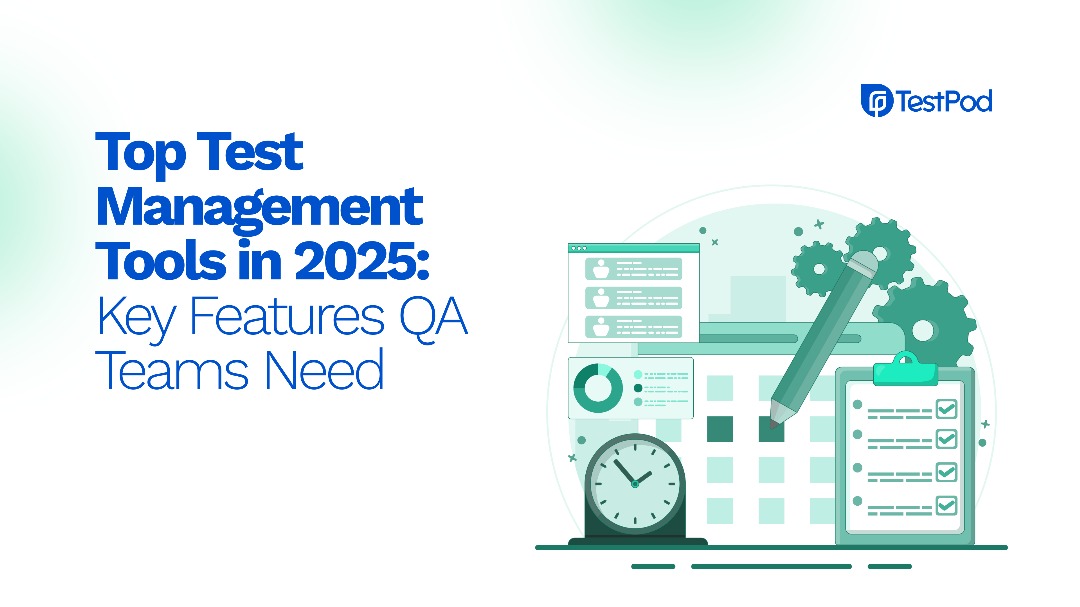Delivering quality software is never accidental; it’s planned, structured, and tested thoroughly.
One of the most overlooked but essential parts of this process is test management.
Whether you’re running manual tests, automated scripts, or both, you need a reliable way to organise your test cases, keep track of test runs, monitor results, and collaborate with your team.
Shipping high-quality software today is harder than ever.
New features roll out faster. User expectations keep rising. Release cycles shrink. Yet bugs, regressions, and delays can cost businesses time, money, and customer trust.
In this environment, testing isn’t just a task; it’s a strategic pillar.
And behind every successful testing strategy is effective test management.
But what exactly does test management mean? Why does it matter so much?
And what tools can help teams do it better, faster, and smarter?
In this article, we’ll break down what test management is, why it matters, some of the well-known tools in the space, and what to look for if you want to level up your QA process.
Let’s break it down.
What Is Test Management?
At its core, test management is how software teams plan, organise, execute, and track their testing activities, from defining test cases to reporting defects.
Test management can also refer to the practice of planning, designing, executing, and reporting tests to ensure that software meets its requirements and quality standards.
It includes things like:
- Defining test requirements and scenarios
- Writing reusable test cases and organising them logically
- Grouping tests into suites for different releases, sprints, or environments
- Scheduling test runs, manual or automated
- Tracking execution status and coverage metrics
- Capturing results and logs for root cause analysis
- Managing bugs and connecting them back to the tests that found them
- Reporting progress to dev teams, product owners, and stakeholders
When teams have a solid test management process, they:
- Catch issues earlier (saving expensive fixes later)
- Reduce last-minute surprises
- Release with more confidence
- Scale testing even as products grow in complexity
Why Not Just Use Spreadsheets or Jira?
Many teams still manage tests in spreadsheets, Jira boards, or a patchwork of documents.
This can work for a while. But as products and teams grow, it becomes a pain.
- Spreadsheets get messy, outdated, and lack traceability.
- Jira is great for managing tasks and bugs, but managing hundreds or thousands of test cases? It’s not built for that.
- Without dedicated tools, teams often duplicate effort, lose visibility, or miss key test cases when deadlines loom.
That’s where purpose-built test management tools come in.
What Does a Good Test Management Tool Do?
The best tools help teams:
- Create, organise, and reuse test cases easily
- Link tests to requirements and user stories for full traceability
- Run manual and automated tests side by side
- Track execution and results in real time
- Collaborate across QA, dev, and product
- Generate clear reports for stakeholders
- Integrate with CI/CD pipelines, bug trackers, and version control
- Adapt to modern workflows like Agile, DevOps, or hybrid models
In other words, they help teams scale quality without adding unnecessary overhead.
Popular Test Management Tools (and One You Should Try)
Over the years, several tools have become trusted names in the test management space:
- TestRail: Known for its simplicity and detailed reports, used by many small to mid-sized QA teams.
- qTest: Good fit for Agile organisations that need traceability and flexible workflows.
- Xray: A popular choice for Jira-focused teams that want test management inside Jira.
- Zephyr: Another tool with strong Jira integration, plus standalone options.
- TestLink: Open-source, simple, but more manual than modern cloud tools.
- TestPod: A newer approach designed for teams that want test management to be modern, collaborative, and powered by smart automation.
How TestPod Stands Out
What makes TestPod worth considering alongside (or instead of) the classics?
1️. AI Test Creation
One of the biggest bottlenecks in test management is writing and maintaining test cases, especially when requirements shift fast.
TestPod tackles this by using AI to help teams draft test cases automatically from user stories, requirements, or even past test history. This means fewer gaps, less grunt work, and more time for QA teams to focus on edge cases and exploratory testing.
2️. All-In-One Hub for Manual & Automated Testing
TestPod is built to work hand-in-hand with test automation platforms (like Scandium) but also keeps manual test management smooth. Teams can plan, execute, and monitor all tests in one place, no more scattered tools.
3️. Designed for Modern Workflows
Whether you’re Agile, hybrid, or following a custom SDLC, TestPod adapts. The UI is clean, intuitive, and easy for testers, PMs, and even developers to navigate.
4️. Better Collaboration & Reporting
From customizable dashboards to real-time status updates and integrations with CI/CD tools, TestPod keeps everyone in sync, whether you’re running a sprint or planning a big release.
In addition to these, TestPod covers the essentials:
- Build and organise test suites
- Track test runs and progress
- Log and manage defects
- Generate clear, shareable reports
- Integrate with your CI/CD pipelines
- Work alongside test automation platforms for end-to-end quality coverage
For teams who need to move fast without sacrificing reliability, this blend of modern AI assistance with classic test management gives TestPod an edge worth trying.
How to Choose the Best Test Management Tool for You
There’s no single “best” tool for everyone; it depends on your team’s size, workflow, and testing needs.
When comparing test management tools, look for:
- Ease of use: A tool should simplify testing, not add complexity.
- Flexibility: Can it handle both manual and automated tests?
- Collaboration: Does it help QA, devs, and PMs stay on the same page?
- Scalability: Will it grow with your team?
- Smart features: Does it offer something that saves time, like AI test creation or integrations?
No two teams are the same. So instead of searching for “the best tool” in general, ask:
- Does this tool fit how we work?
- Will it grow with us?
- Can non-technical stakeholders use it easily?
- Does it help us automate what we can?
- Does it plug into the other tools we use, GitHub, Jira, Slack, CI/CD pipelines?
- Will it help us improve test coverage and release quality without slowing us down?
If a tool can check these boxes, you’re on the right path.
Final Thoughts
Test management is no longer optional; it’s a competitive advantage.
Choosing the right tool can help your team move from reactive testing to proactive quality engineering.
With smarter workflows, AI-powered test creation, and a clear view of your quality pipeline, you’re not just catching bugs, you’re building better software.
Curious to see how AI fits in?
Join our live TestPod product demo this Wednesday at 2 pm, get a front-row seat to see how your team can plan, track, and scale tests faster than ever.
We’ll answer your questions live and show you how TestPod works in real projects.
 Wednesday at 2 PM (UTC +1)
Wednesday at 2 PM (UTC +1)



